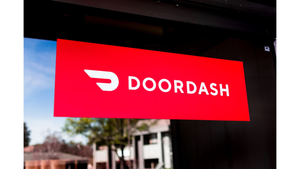Pushing protein
Supermarkets stronghold as the primary channel where consumers make food purchases has never been more precarious. Target and Walmart have entered the fresh produce arena.
January 1, 2018
Retailer meat cases are in the midst of significant changes as leaner and smaller cuts gain popularity. By Craig Levitt Supermarkets stronghold as the primary channel where consumers make food purchases has never been more precarious. Target and Walmart have entered the fresh produce arena. Dollar stores have been eroding center store sales for years. Even drug stores have grabbed market share in such categories as beverages, baby food and snacks. However, grocers can take heart as the majority of shoppers still look to the supermarket when making their fresh meat purchases. According to Power of Meat 2011: An In-Depth Look at Meat Through the Shoppers’ Eyes, the annual report release jointly by the American Meat Institute and the Food Marketing Institute, 68% of consumers say the supermarket remains their store of choice when purchasing meat. Fresh meat remains a staple of the supermarket and vital to the long-term health of grocery stores simply because consumers feel comfortable with the selection of product and quality available at the food store. Yet with so many new cuts and nutritional options hitting the marketplace, retailers need to stay ahead of the curve in terms of product assortment. Knowing who the shopper is and what they are looking for is also extremely important. While each protein offers unique qualities and opportunities that retailers can take advantage of, there are definitely universal trends that can be found throughout the meat case—not the least of which is the growing popularity of lean meat. Best of all for retailers, research has shown that today’s shoppers are actually willing to pay higher prices, about 20% more, for leaner cuts. “It is really interesting to see how much power that word ‘lean’ has,” says Meghan Pusey, director of public relations for Centennial, Colo.-based National Cattlemen’s Beef Association (NCBA). “Consumers see ‘lean’ and immediately think premium product. This has really helped in the surge of beef sales.” In the first quarter of 2012 the National Pork Board will be running a campaign that promotes the leanness of pork. According to Patrick Fleming, director of retail marketing for the Des Moines, Iowa-based organization, this is a key time for retailers to promote nutrition and he says ounce for ounce, a pork tenderloin is just as lean as a boneless, skinless chicken breast. “Most consumers still don’t realize how lean and healthy pork cuts have gotten over the years,” says Fleming. In addition to leaner cuts, consumers continue to gravitate to smaller cuts of all meats. On the pork side, JBS has had success with single-pack items like St. Louis Ribs and Boneless Loin Halves, according to Rick Parker, director of pork marketing for the Greeley, Colo.-based company. Parker says consumers appreciate these vacuum-packed items, which have an excellent shelf life and are convenient for retailers because there is no repackaging in the back of the store. Retailers should not gloss over the value in making shopping the meat case as simple as possible. Part of that process includes educating shoppers on the new cuts in the case. While it is true more Americans forgo visiting restaurants for homemade meals, many of the new cuts they see in the meat department are unfamiliar to them and often they are unsure of how to prepare them. “Focusing on customer service pays big dividends,” says Parker. “Many consumers are buying cuts of meat with which they are unfamiliar and they have lots of questions. Retailers that use extensive signage and employ a knowledgeable staff, or ideally both, can help drive sales. When a consumer makes a meat purchase it is a relatively expensive item in the basket and they want the confidence that preparing the meal is going to turn out okay.” JBS officials say they help retailers who are regular customers by offering training sessions to retail staffs as well as providing signage and brochures that augment what retailers can offer consumers. “There is a partnership between manufacturer and retailer, and we try to live up to that partnership,” says Parker. For retailers, providing customer service is clearly important, but in today’s cost-conscious economy, price and value will more often than not win the day for retailers. Marty Carpenter, director, U.S. and Caribbean market development for Canada Beef, based in Calgary, Alberta, says members of Canada Beef has been talking about smaller cuts for close to a decade and many of the retailers they work with have begun to catch on. “If a steak is $15 it is quite possible a retailer has taken out a level of consumer that says to themselves, ‘I can’t afford $15,’” says Carpenter. “But if you change that strip loin into medallions, all of a sudden you have got a meal for two that is a reasonable size and delivers a tasty eating experience. Now that makes sense to the consumer again.” The smaller cuts are actually a win/win for retailers, says Pusey. According to recent NCBA research, these smaller cuts have created new customers for the meat case, not cannibalizing existing sales. “Traditionally consumers would purchase a few rib eyes for the entire family, she says. “Now mom still buys a rib eye for her husband, but also smaller cuts for her and the children.” Generally thought of as a holiday meal, ham producers have also taken to offering smaller cuts in order to generate interest throughout the year. Cook’s Ham, based in Kansas City, Mo., has introduced a line of boneless hams that, Jon Lewallen, director of marketing, says has a more natural muscle quality and is intended to deliver a better eating experience. Getting consumers to think about ham beyond the holidays can be difficult, however. “It is just a matter of continuing to beat the drum with consumers,” says Lewallen. “Most consumers are creatures of habit and buy ham typically for the holiday and don’t think much about the product outside the holidays. It is important to keep that option in front of them and remind them of the opportunities that exist for other meal occasions.” While ham suppliers are searching for added meal occasions, chicken suppliers have no such problems. According to the Power of Meat report, chicken consumption remains on the rise. There has been a shift in what consumers are eating, however. Much of the shift has been toward dark meat and away from bone-in items. “Consumers are learning it is often a better value to purchase the boneless products because they can consume 100% of their purchases,” says Hilary Burroughs, manager of marketing services for Laurel, Miss.-based Sanderson Farms. “Consumers are also becoming more aware of additives such as saltwater in fresh chicken products, therefore they are looking to purchase non-enhanced/single ingredient poultry items.” Observers say that turkey sales are increasing as well, led by ground turkey. Like other proteins, leaner ground turkey points continue to garner much interest from consumers. Yana Childs, marketing and innovation leader for Cargill Value Added Meats Retail, says leaner points in ground turkey account for more than 60% of sales while lean points above 90% are up 9% for the year. Since turkey is just a small portion of the meat category, Childs says it needs to “out-punch its weight.” To do so, Cargill, based in Wichita, Kan., provides POS material to help retailers’ better merchandise turkey. “It is important to talk about why turkey is a superb protein from a healthy eating perspective but also to help the shopper with easy to use ideas and suggestions, as they sometimes struggle with how to prepare it and what cuisine to use,” she adds. Au natural Eating healthier means different things to different people. Some reduce fat intake; others watch sodium levels. For those looking to eliminate unwanted chemicals, natural and organic meats have become a viable option. Industry observers say that an opportunity exists for retailers, not just natural food stores, to capitalize on the trend, but they need to more than simply carry natural and organic meat products. “If the staff is not prepared to sell the products correctly, not only will the products not sell, but it may actually inhibit shoppers from choosing a product that consumers may actually really want because they don’t have enough information to make an informed choice,” says Simcha Weinstein, director of marketing for Albert’s Organics. Weinstein adds that while the economy has had an affect on organic beef sales, the Bridgeport, N.J., based company has seen an up tick with its natural meats including its Heartland Meadow brand. Natural also extends to other cuts of meat. JBS, based in Greeley, Colo., offers a line of natural pork under its Swift brand. Rick Parker, director of pork marketing, says Swift Natural is a dry product that is not enhanced and meets the USDA definition of natural.
About the Author
You May Also Like




